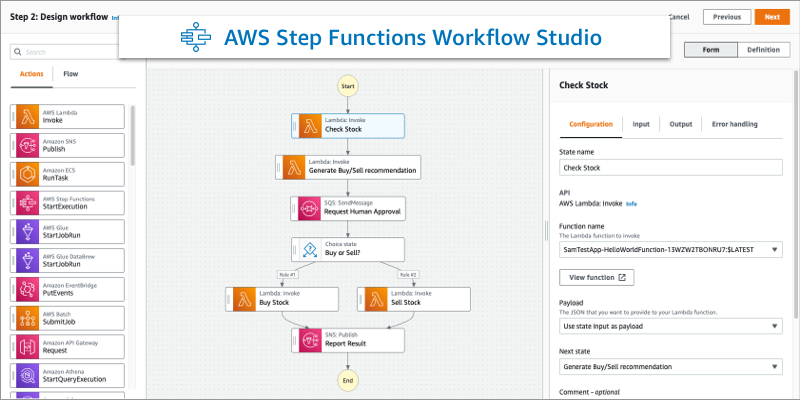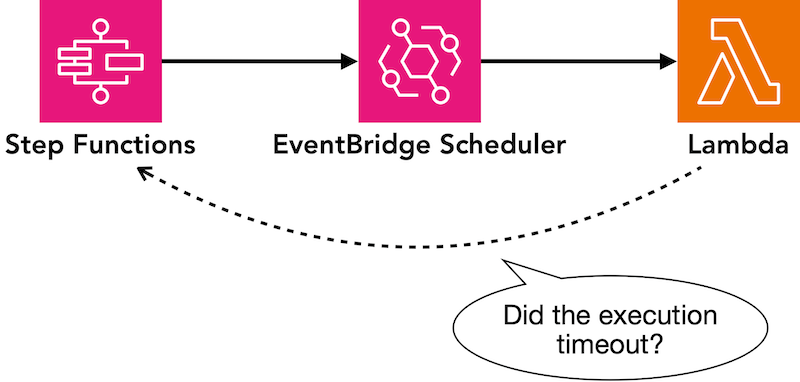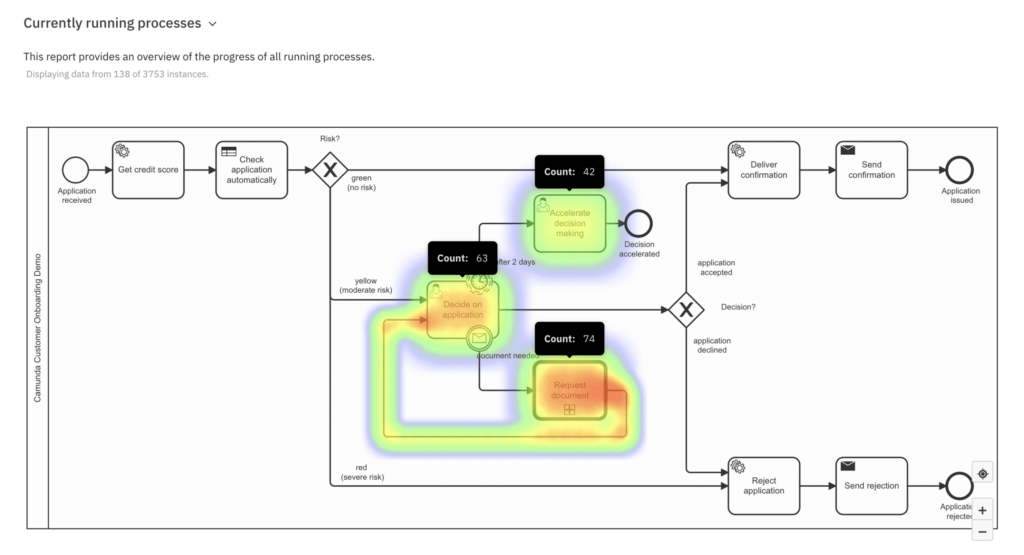10 Reasons Why You Should Not Migrate from Legacy BPM Systems to AWS Step Functions
Migrating away from a legacy Business Process Management (BPM) application is a significant step toward modernization. However, transitioning to AWS Step Functions as a standalone solution may not be the best move for organizations that require robust workflow automation tools. While AWS Step Functions have their strengths, they lack critical capabilities found in leading BPM tools like Camunda and other business process modeling tools. Here are ten reasons why this migration may not meet your operational needs.

1. Limited Visual Editor
AWS Step Functions include a visual editor that enables users to design workflows, but it can quickly become cumbersome when dealing with complex business processes. While it offers a way to orchestrate tasks, its interface lacks the depth and clarity required for intricate workflows that involve numerous dependencies, decision points, and integrations.
Unlike more advanced business process modeling tools such as Camunda, AWS Step Functions do not provide a structured way to articulate inputs and outputs in a way that ensures transparency and maintainability. Additionally, it does not effectively encapsulate logic, making it difficult to manage state transitions, error handling, and process modifications at scale. This lack of a robust modeling framework can result in workflows that are harder to debug, optimize, and evolve over time, especially in enterprise environments where flexibility and adaptability are crucial.
2. Rigid Sequential Flow
Although AWS Step Functions allow for the creation of sequential workflows, they fall short when it comes to handling more sophisticated orchestration needs. Their rigid structure makes it challenging to implement advanced process flows that require parallel processing, dynamic branching, asynchronous timers, or event-driven mechanisms such as interrupted message events. These limitations can create bottlenecks in scenarios where multiple tasks need to be executed simultaneously or when workflows must respond dynamically to external triggers.
In contrast, business process management (BPM) tools like Camunda are specifically designed to manage these complexities, offering built-in capabilities for orchestrating parallel paths, handling long-running processes, and incorporating human-in-the-loop interactions. This flexibility makes BPM platforms a more suitable choice for enterprises looking to automate real-world business processes that demand scalability, adaptability, and precise execution control.

3. Inadequate Timeout Management
While AWS Step Functions provide basic timeout mechanisms, they lack the sophistication needed to manage more complex timeout scenarios, such as non-interrupting timeouts or escalation triggers based on predefined timers. This limitation can pose challenges for workflows that require nuanced timing controls, such as notifying a supervisor before a task reaches a hard deadline or escalating stalled processes without prematurely terminating them. As a result, businesses often find themselves forced to develop custom workarounds, adding unnecessary complexity and technical debt to their automation efforts.
By leveraging robust business process management (BPM) tools, organizations can implement these advanced timing features natively, ensuring more efficient workflow execution. Consulting services like Capital BPM specialize in optimizing process automation by utilizing BPM platforms that inherently support flexible timeout handling, reducing the need for costly and time-consuming custom development.
4. Insufficient Exception Handling
While AWS Step Functions offer basic timeout mechanisms, they struggle with more advanced scenarios like non-interrupting timeouts and escalation triggers based on timers. This limitation makes it difficult to manage workflows that require proactive notifications or escalations without prematurely terminating tasks. Businesses often end up building custom solutions, adding unnecessary complexity and technical debt.
By using process automation platforms, organizations can handle these advanced timing needs natively, ensuring smoother workflow execution. Consulting services like Capital BPM help businesses implement robust workflow automation solutions that eliminate the need for costly custom development while improving efficiency and scalability.
5. No Support for Compensation Events
Compensation events—critical for properly reversing transactions in complex workflows—are not natively supported by AWS Step Functions. This limitation makes it challenging to handle scenarios where certain steps need to be undone selectively without rolling back an entire process.
Effective business process modelling platforms, however, offer built-in support for compensation events, allowing businesses to manage these situations seamlessly. This capability is essential in complex environments where precise transaction control is required to maintain accuracy, compliance, and operational efficiency.
6. Lack of Native Versioning
AWS Step Functions do not support running multiple process versions concurrently, which is a standard capability in process mapping tools. This restriction makes it difficult to deploy updates without disrupting existing workflows, forcing businesses to choose between immediate cutovers or complex workarounds.
In contrast, workflow programs allow different process versions to run simultaneously, ensuring smooth transitions during updates. This flexibility is crucial for enterprises that frequently refine their processes, minimizing downtime and reducing risks associated with workflow changes.

7. Minimal Reporting and Analytics
While AWS Step Functions offer basic monitoring through CloudWatch, they lack the detailed reporting capabilities provided by workflow automation tools. This limitation makes it difficult to track process inefficiencies, identify delays, and optimize execution based on real-time data.
With workflow process mapping in platforms like Camunda, organizations can gain deeper insights into bottlenecks, performance trends, and cost analysis. These advanced reporting capabilities enable continuous improvement, helping businesses refine their processes, enhance efficiency, and make data-driven decisions.
8. Static Processes
AWS Step Functions – best suited for static, predefined workflows – is less adaptable to dynamic business needs. As organizations grow and evolve, rigid workflows can become a bottleneck, requiring costly modifications or workarounds to accommodate new requirements.
BPM consulting services like Capital BPM help ensure that your processes remain flexible and scalable, allowing for seamless adaptations without incurring technical debt. By leveraging advanced workflow automation strategies, businesses can future-proof their operations and maintain agility in an ever-changing landscape.
9. No Built-In Rule Engine
A robust rule engine, found in tools like Camunda, separates business logic from execution logic, allowing for precise updates without affecting the entire system. This modular approach enhances flexibility, making it easier to adapt to changing business requirements with minimal disruption.
In contrast, AWS Step Functions require monolithic redeployment for even minor updates, leading to inefficiencies and increased development overhead. This limitation makes them less suitable for dynamic business environments where agility and quick iterations are essential.
10. Complex Event Handling
AWS Step Functions support some event triggers, but implementing nuanced event-based functionality often requires extensive custom coding. This adds complexity and increases the risk of inconsistencies, making it harder to scale and maintain event-driven workflows efficiently.
In contrast, workflow automation platforms provide a standardized approach to event handling with predefined event types and configurable options. This simplifies implementation, reduces development overhead, and ensures a more consistent, scalable solution for managing complex business processes.

Why Camunda and BPM Tools Are Better Alternatives
Leading workflow automation platforms like Camunda provide comprehensive business process modeling capabilities to address complex organizational needs. These platforms offer a structured approach to designing, executing, and optimizing workflows, ensuring consistency and efficiency across business operations.
With features such as native versioning, compensation events, and advanced exception handling, Camunda enables businesses to maintain adaptable and scalable processes. This flexibility ensures that workflows can evolve seamlessly with changing requirements, reducing technical debt and enhancing overall operational agility.
A Better Approach: Combine AWS Step Functions with BPM Tools
AWS Step Functions excel at executing atomic actions, but they are not designed for end-to-end process orchestration. By integrating AWS Step Functions with BPM tools like Camunda, organizations can achieve the best of both worlds. BPM consulting services can help you design a hybrid solution that leverages the flexibility of workflow automation tools while taking advantage of the efficiency of AWS Step Functions for individual tasks.
This approach ensures your organization is equipped to handle changing business needs while maintaining scalability and operational efficiency. Don’t settle for a limited solution—invest in tools that can grow and adapt with your business.
Want to learn more? Click here to meet with our team to discuss migrating to better BPM options like Camunda.